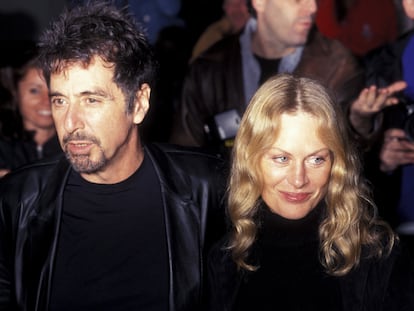‘Guillermo del Toro’s Pinocchio’: a stop-motion musical lesson in the dangers of fascism
The Oscar-winning director’s genre-hopping adaptation of Carlo Collodi’s story recaptures some of the darkness and perversity of the original text
If you are among those who feel that the original Pinocchio (1940), an animation masterpiece created by the classic Disney factory, is cruel and inappropriate for a modern generation of children because of its darkness, drunkenness, brutal punishments and naughty children being branded with donkey ears, it is worth reading the original story by Carlo Collodi, which was never designed exclusively as children’s literature: the wooden boy leaves his creator Geppetto half dead with a hammer blow to the head when reproached for his behavior; Pinocchio sets off with the Fox and the Cat not on the promise of fun but because they tell him there is a mountain where if money is sowed, it grows; at school he fights with his classmates and leaves one of them unconscious; and the original version, published between 1882 and 1883 in the newspaper Giornale per i bambini, ends with Pinocchio being hanged.
Between 2019 and 2022, three new adaptations have been added to the dozens of versions already adapted for film and television over the decades. But perhaps what is most striking is that two of these attempt to recapture some of the darkness and perversity of Collodi’s original novel, contrary to what the 21st century’s generally overprotective parents seem to demand. The exception is the inconsequential adaptation by Robert Zemeckis released earlier this year and starring Tom Hanks as Geppetto. Both Matteo Garrone’s 2019 live action movie, with Roberto Benigni playing the carpenter (the actor had previously portrayed Pinocchio in a 2002 Italian version), and Guillermo del Toro’s stop-motion animation, released on December 9 on Netflix, focus on the blackness of the story to compose films that are not entirely intended for children, or certainly not for the youngest ones.
Del Toro’s decision to film his movie in stop-motion (which is done frame by frame, based on original models) led the Oscar winner to call on the services of Mark Gustafson, a specialist in the format, who is credited as co-director. The second big innovation is that Del Toro’s imagining of the classic story wanders between genres - drama, fantasy with a touch of black comedy – and features a range of musical numbers. Disney’s classic version did include some songs, but this version features around 10 original songs created by Academy Award-winner Alexandre Desplat (The Grand Budapest Hotel, The Shape of Water) with lyrics by Roeban Katz and Del Toro himself. These songs are rather ugly and provide the movie’s somber tone, which continually weighs down the otherwise uneven pace of a work that, during its first half hour, is too difficult to grasp.
From a tragic prologue, Del Toro has added a primordial subtext: that of the impossibility of repairing grief over the loss of a child - in this case, Geppetto’s child Carlo - which leads him one drunken night to embark on the creation of the wooden boy and, in some way, to a substitution. It is an opening act that also provides surprises (not necessarily for the better) in the diversity employed in the creation of the characters, each one seemingly elaborated by practically opposing techniques and styles: Pinocchio is presented as a collection of sticks, thus staying true to the essence of Collodi’s text, a visual rendering of majestic risk. Geppetto is almost a sacred sculpture and Jiminy Cricket sports a bizarre and horrendous plastic-looking design with which it is impossible to empathize.
However, Del Toro’s Pinocchio takes flight after its debatable opening section, providing some dazzling moments. The film’s time-frame, set in the 1930s during the fascist dictatorship of Benito Mussolini and featuring the determination of the Blackshirts to seduce the wooden boy with their military paraphernalia and their victories, connects effectively with the political use made of Collodi’s myth by the fascists during that era and, naturally, with current political drifts in some parts of the world. These are the monsters of authoritarianism, which the director had already touched upon in Pan’s Labyrinth (2006). And although the theme of remorse carries less weight in Del Toro’s version, the risk of temptation presented by the rise of totalitarianism is probably the greatest lesson of the director’s reinterpretation of Collodi’s cautionary tale.
PINOCCHIO BY GUILLERMO DEL TORO
Director: Guillermo del Toro, Mark Gustafson.
Cast: David Bradley, Anthony Mann, Ewan McGregor (voices).
Genre: Animation.
Platform: Netflix.
Duration: 117 minutes.
Release date: December 9.
Tu suscripción se está usando en otro dispositivo
¿Quieres añadir otro usuario a tu suscripción?
Si continúas leyendo en este dispositivo, no se podrá leer en el otro.
FlechaTu suscripción se está usando en otro dispositivo y solo puedes acceder a EL PAÍS desde un dispositivo a la vez.
Si quieres compartir tu cuenta, cambia tu suscripción a la modalidad Premium, así podrás añadir otro usuario. Cada uno accederá con su propia cuenta de email, lo que os permitirá personalizar vuestra experiencia en EL PAÍS.
¿Tienes una suscripción de empresa? Accede aquí para contratar más cuentas.
En el caso de no saber quién está usando tu cuenta, te recomendamos cambiar tu contraseña aquí.
Si decides continuar compartiendo tu cuenta, este mensaje se mostrará en tu dispositivo y en el de la otra persona que está usando tu cuenta de forma indefinida, afectando a tu experiencia de lectura. Puedes consultar aquí los términos y condiciones de la suscripción digital.
More information
Archived In
Últimas noticias
Most viewed
- Sinaloa Cartel war is taking its toll on Los Chapitos
- Reinhard Genzel, Nobel laureate in physics: ‘One-minute videos will never give you the truth’
- Oona Chaplin: ‘I told James Cameron that I was living in a treehouse and starting a permaculture project with a friend’
- Why the price of coffee has skyrocketed: from Brazilian plantations to specialty coffee houses
- David King, chemist: ‘There are scientists studying how to cool the planet; nobody should stop these experiments from happening’












































